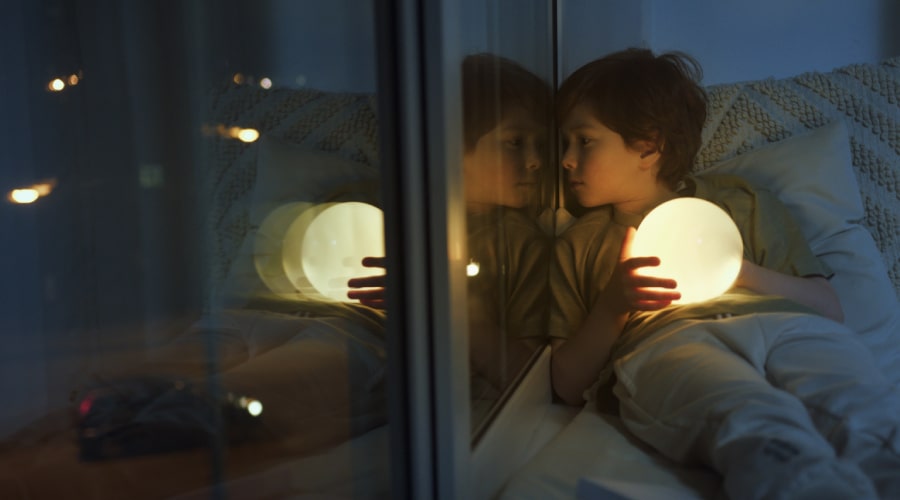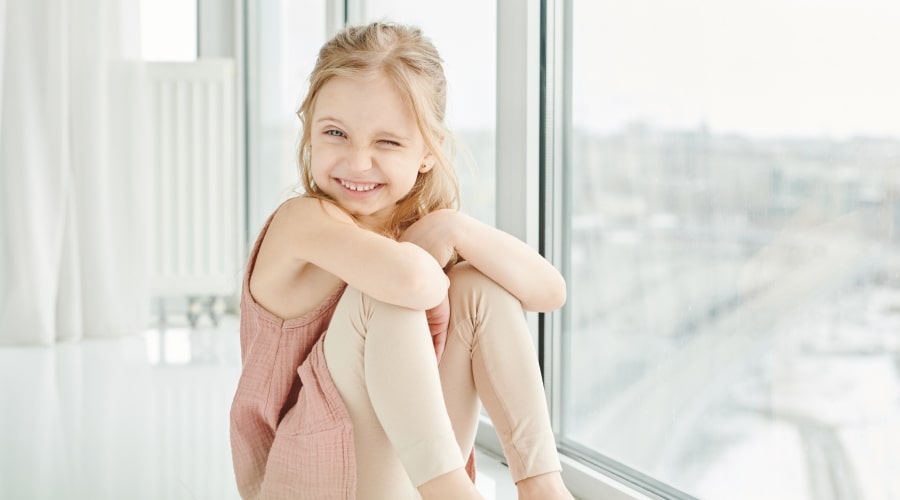settings
children
With Famly since
Whenever I’m in a setting where there’s an opportunity for children to experiment with light, it’s always an instant winner.
Think about it - the light outside is constantly changing. As seasons come and go, the brightness outside changes, as does the warmth and colour of the light. Grey winter days bring cold blue light, whereas bright summer days bring a warm orange one. It’s no wonder children are so fascinated by it!
But more than just a fascination - experiencing and interacting with different forms of light actually has valuable learning opportunities.
The key to this powerful resource is our emotional connection to it. When we see twinkling fairy lights, they might make us think of magical, exciting times like Christmas, bright warm lights…summer holidays. When it’s dark and there’s no light, that might bring a sense of fear or worry.
Light is a magical thing, and has huge potential for learning. I’ll explore why an emotional connection makes a massive difference to learning when you pair it with a child’s environment, and a few tips for you to keep in mind to make light play as engaging as you can.

Emotional and environmental connection
In the Early Years, children can be totally immersed within the environment, or they can be interacting physically and emotionally in connection with what’s around them. But when these two areas intersect, children’s learning opportunities multiply.
If they’re completely engrossed in their play and learning, they essentially become part of their environment rather than just interacting with it. They're entangled in their learning. It’s what Hillevi Lenz Taguchi calls ‘moments of embodied entanglement’.
And light and light sources can be the perfect way to promote this sort of emotional response and engagement. Light is all around us, all the time. That’s what makes it a fantastic way to encourage children to become immersed in their learning - it’s a constant in every second of our daily lives.
So how do we facilitate this ‘entanglement’ in settings, and how can we use light to help us get there?
Why light promotes entanglement
We often give children the chance to capture and control light. They can explore shadows using their own bodies while the sun streams through the window, or with different hand movements using torches against a wall.
Having light sources to manipulate introduces them to the concepts of light and dark, and what happens when a torch is turned on or off. But not just that - they’re able to exercise power and control.
When you think about it, children often have limited opportunities to take control in their day to day lives. Much of their day is decided for them. From when they wake up, to what they’ll wear, to what they’ll eat and where they’ll go. Even in settings, children’s choices are sometimes restricted by timetabled events like carpet times, snack times, story time and home time.
Giving children a sense of power and control not only gives them a little dose of independence, but it actively encourages them to engage with their environment and use those emotional connections, such as the warm glow of a torch that may mimic the sunshine, to further their own learning.
One thing is clear: when children feel an emotional connection to their learning, it boosts their engagement levels. And we all know that engagement is key to developing new skills and knowledge.

Introducing light to your setting
Light can be used to create a calming effect or to invigorate. It can be used as part of small-scale play with puppets and torches. It can be used to magnify the real and imagined world changing children’s perceptions and allowing them to experiment with size, orientation and perspective - the possibilities are endless.
Providing a variety of resources and ideas that help children to capture and manipulate light in their play and interactions is key to create these moments of ‘entanglement’.
Here are a few of my favourites:
- Looking at a daffodil in an outdoor space with the sun shining on its petals can be magical. Talk about how the daffodil seems to shine an even brighter yellow in the sun, and how that would change if it were cloudy.
- Light boxes are perfect tools to show children the ‘magic’ of light. Take that same daffodil and place it on a light box. The light will show all of the lines and veins that were invisible in the sun.
- Shining light into and through water can give children a whole new perspective on those big ideas like reflection, refraction and transparency. Try using some shiny or opaque resources into the mix, too. Just make sure everything is risk-assessed when your light source is near any water.
Things to keep in mind
It isn’t just about giving children the opportunity to explore light - their interactions and engagement with it are equally as important. Here are a few things to keep in mind when you introduce new light sources to your setting, and to reflect on as you observe children’s play:
- Is the light source appropriate? Practitioners often use equipment like overhead projectors to create a light source for children to work with. The light from these units can often be very strong and overwhelming, and only recommended for adult use.
- Can the children control the light? Part of the engagement that often comes through light and dark play is the opportunity to have some control over the light source itself. Try and find equipment that can be switched on and off or dimmed and brightened.
- Are there opportunities to play and explore? Alongside the light source, are you able to offer the children a range of resources to experiment with? A simple plastic bottle can create unusual patterns when a torch is shone through it.

Light in your environment
It’s not just about giving children those opportunities to engage with light using resources. When we think about creating effective learning spaces for children, we also need to focus on the atmosphere. If we’re looking to facilitate an emotional connection during light play, the atmosphere the children feel around them is incredibly important.
Of course the furniture and the resources are crucial, but light itself can affect a child’s ability to learn. Creating this atmosphere depends on the mood and feelings of the children and adults who are using the space. That’s why we should ensure that we have spaces that can be lit, spaces that change as the natural light changes, and spaces that can be dark.
It’s not like you can just pluck an atmosphere out of thin air - it takes time, and it takes practice. Try not to think of it as something you can buy or ‘add’ to a space, but rather something that you can encourage or promote.
To cap it all off - remember how healthy light is for our mental health. It’s incredibly fun and beneficial to play around with, but a good source of natural light can make all the difference to the children in your setting. It’s sometimes tempting to cover light sources like windows and doors with artwork and display, but natural light is vitally important for our health, development and mood. Keep the windows and doors clear and let the light in.
The big ideas
Please note: here at Famly we love sharing creative activities for you to try with the children at your setting, but you know them best. Take the time to consider adaptions you might need to make so these activities are accessible and developmentally appropriate for the children you work with. Just as you ordinarily would, conduct risk assessments for your children and your setting before undertaking new activities, and ensure you and your staff are following your own health and safety guidelines.
Try before you buy
Try every Famly feature, see what you like, and invite your staff. No commitment, no credit cards. Just a 2-week free trial.
Start free trial








